Comment:
Because of the widely scattered and minor nature of the
inflammatory changes, they are felt most likely to represent
nonspecific reactive alterations, although the possibility of a
low-grade chronic hepatitis cannot be completely excluded.
Clinical correlation is necessary.
Previous Biopsies on this Patient:
None
TPIS Related Resources:
Modified Knodell Scoring
Liver Transplant Topics
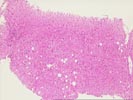
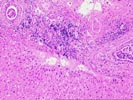
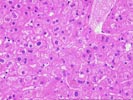
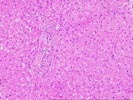
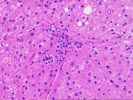
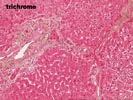
The liver biopsy shows normal hepatic architecture with several large and fibrotic portal tracts suggesting possible portal-based bridging fibrosis. In most instances, the portal tracts are free of inflammatory infiltration, although several contain a minor scattering of small lymphocytes. One large portal tract in particular shows a partially crushed lymphoid aggregate. Bile ducts are intact with focal accentuation of the periductal connective tissue in a large portal tract. No piecemeal necrosis is identified. The lobules demonstrate a haphazardly scattered collection of lymphocytes with occasional focal necrosis, scattered Kupffer cell clusters, and mild macrovesicular steatosis. No viral inclusions, ground glass hepatocytes, florid duct lesions, bile duct loss, steatohepatitis, or pigment deposition. The PAS stain demonstrates no cytoplasmic globules and the Hall stain is negative for canalicular cholestasis.
The changes are relatively minor and, given their patchy distribution, are more suggestive of so-called reactive hepatitis. Nonetheless, minimal chronic hepatitis cannot be completely excluded, and clinical correlation is thus required.